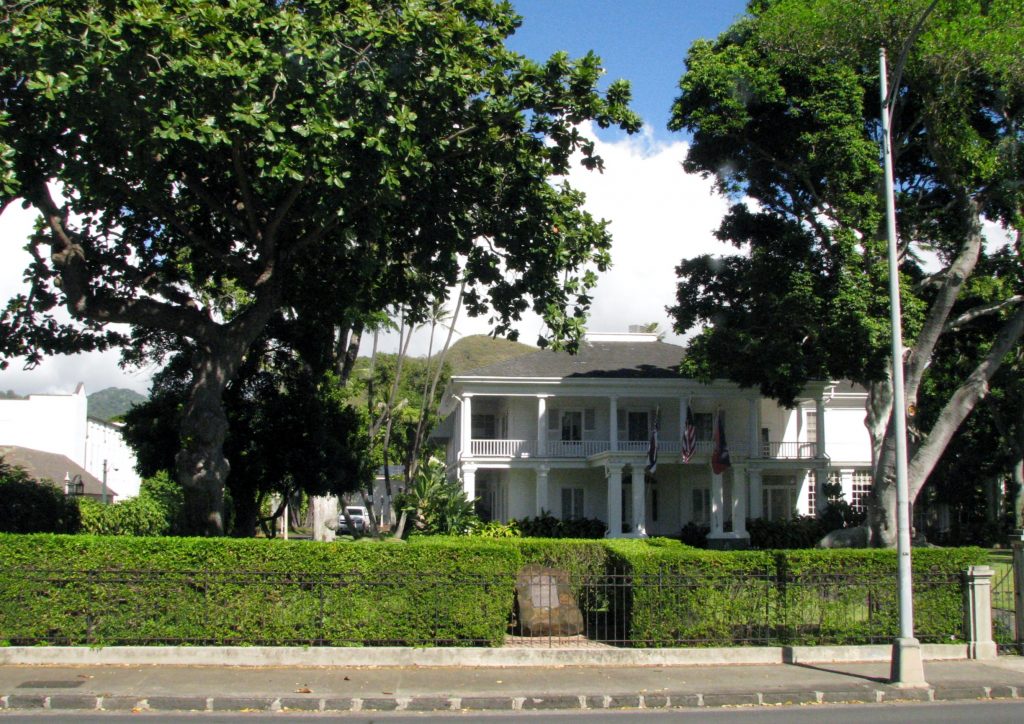We arrived at Pearl Harbor Visitor Center operated by the National Park Service. It was free to the public with a museum with exhibits about the attack. On the center’s grounds, along the shoreline, are exhibits and a Remembrance Circle. The Circle pays tribute to the men, women and children, both military and civilian, who were killed because of the December 7, 1941. In the center of the grounds is directional sign: Crossroads of the Pacific.
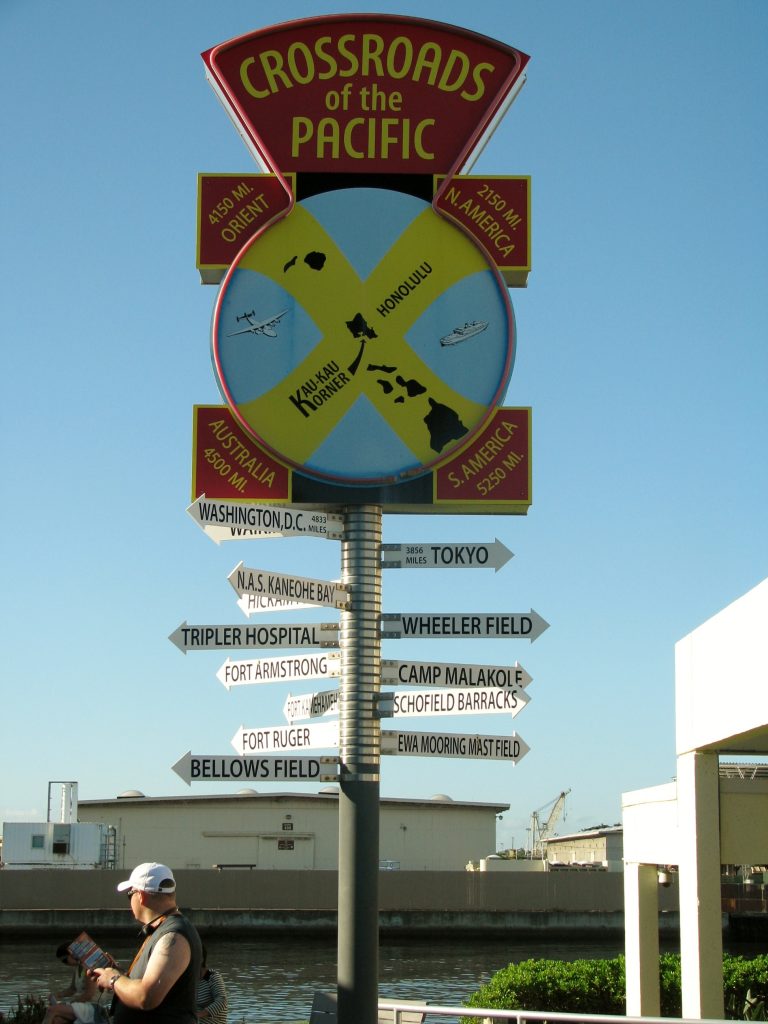
Before boarding the boat for the short trip to the Memorial, a 23 minute documentary film depicting the attack on Pearl Harbor was presented. The shuttle boat passes the sites of other ships sunk or damaged in the attack. During the ride a narrative audiotape related what happened on the morning of the attack.
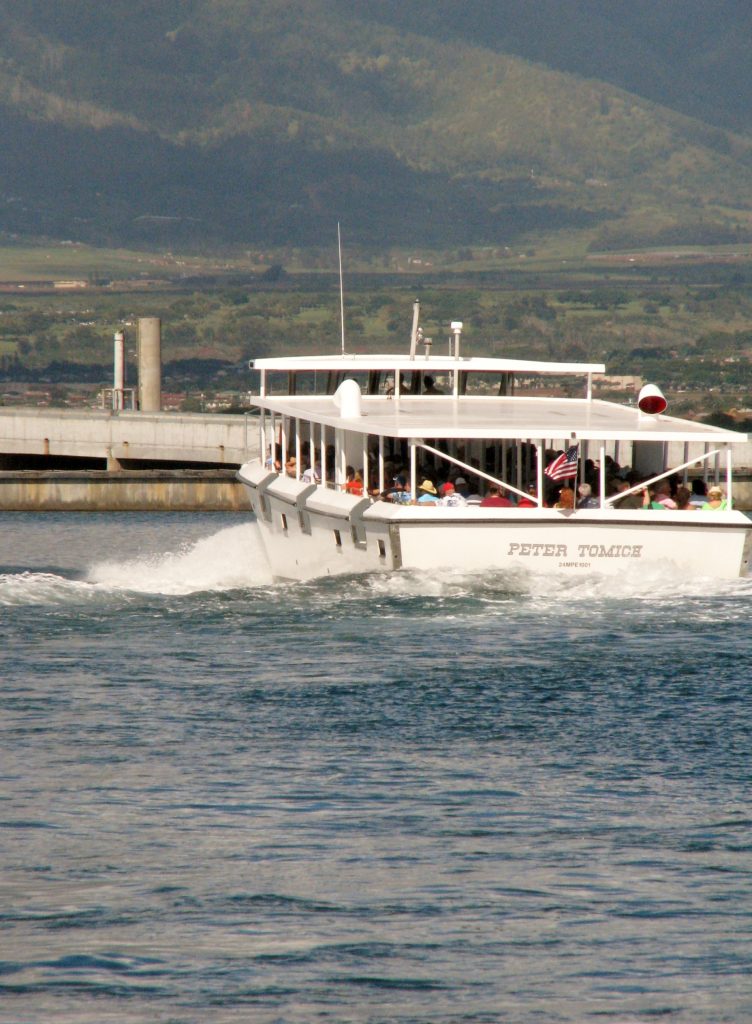
The memorial is in the form of a bridge floating above the ship and accommodated 200 people. The 184 foot long structure has two peaks at each end connected by a sag in the center of the structure. It represents the height of American pride before the war, the sudden depression of a nation after the attack and the rise of American power to new heights after the war.
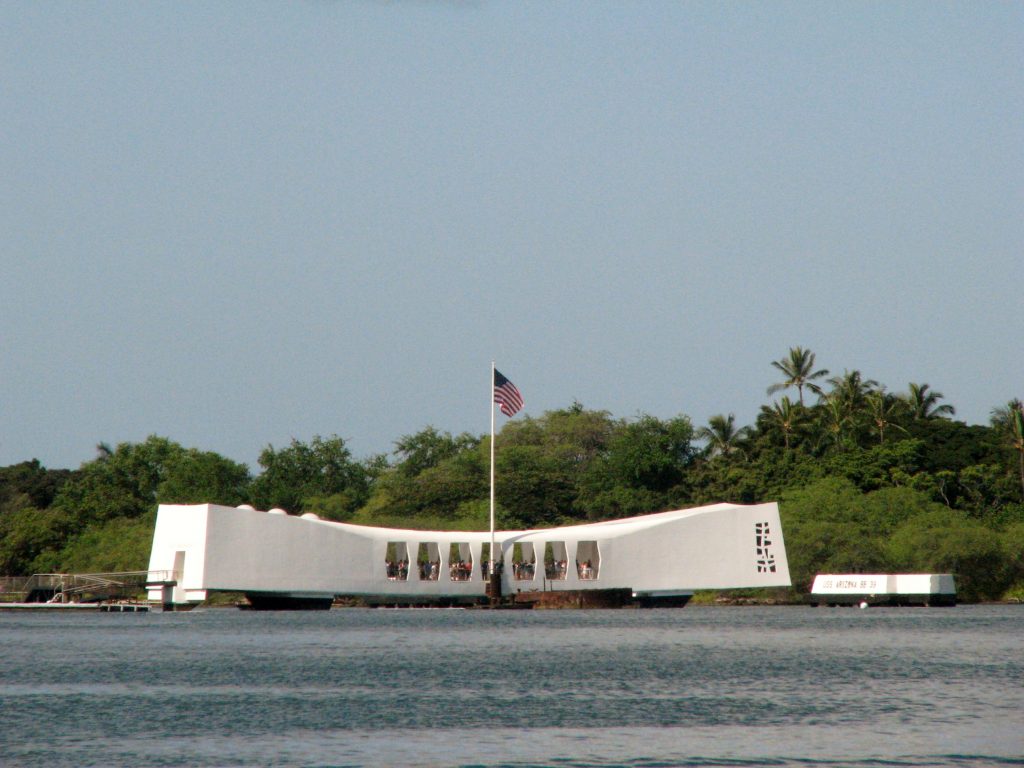
There are three main parts to the national memorial: entry, assembly room and shrine The entry hall is where ceremonies are held and had this nice display of flags.
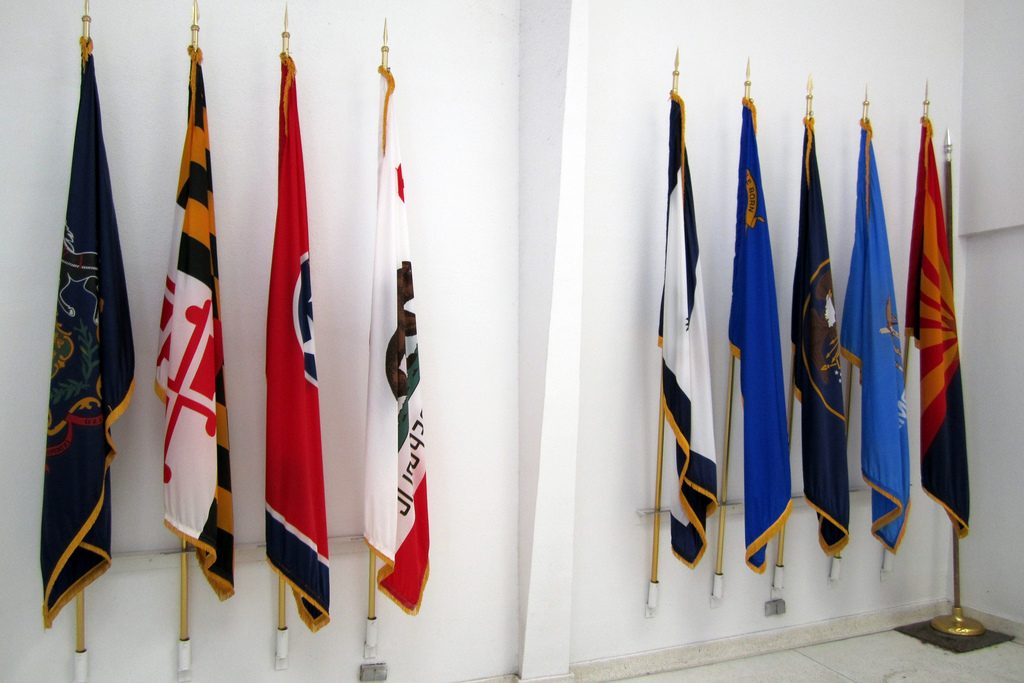
The central assembly room features seven large open windows on either wall and ceiling, to commemorate the date of the attack. There is also an opening in the floor overlooking the sunken decks.
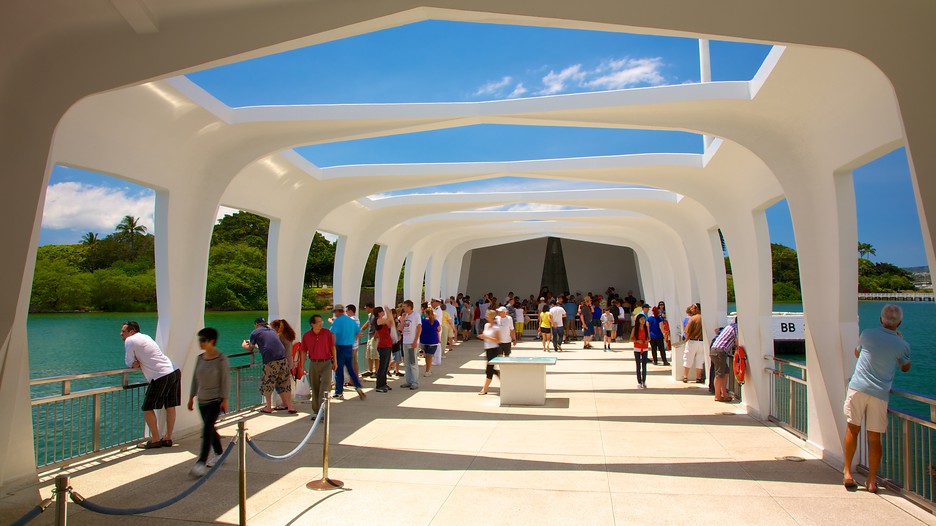
We entered the memorial everyone was very respective and silence was maintain through out the visit.
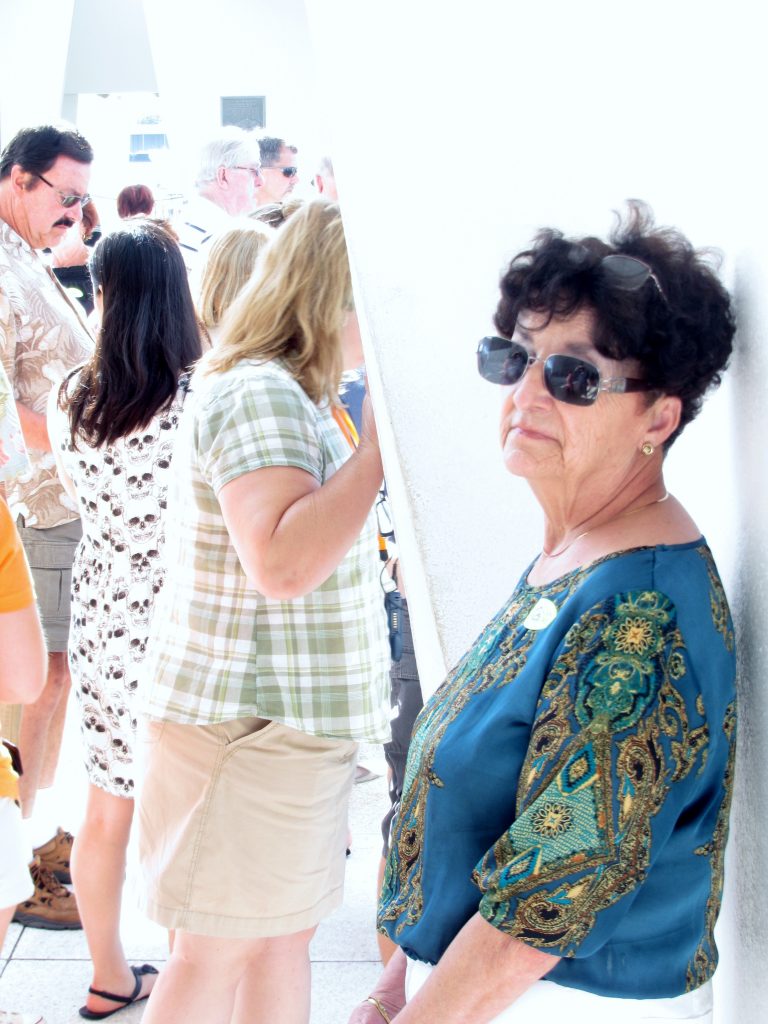
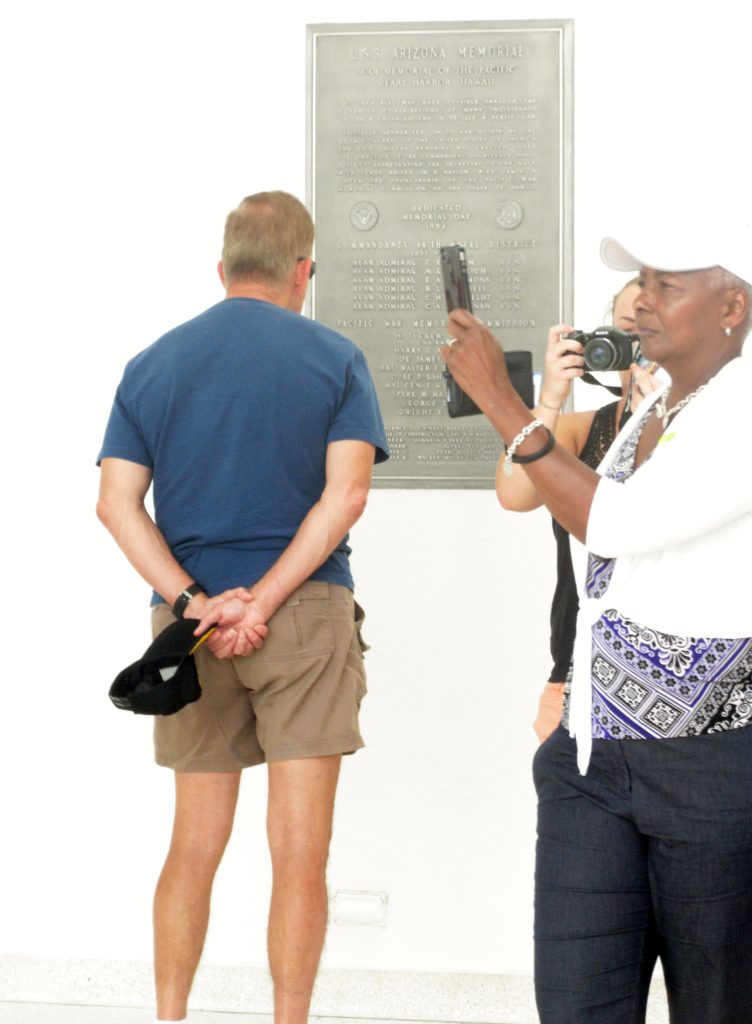
Parts of the USS Arizona can be seen on top and below the water. At one place, an oil leak from the sunken battleship can still be seen rising from the wreckage to the surface of the water. This oil is sometimes referred to as “the tears of the Arizona” or “black tears”
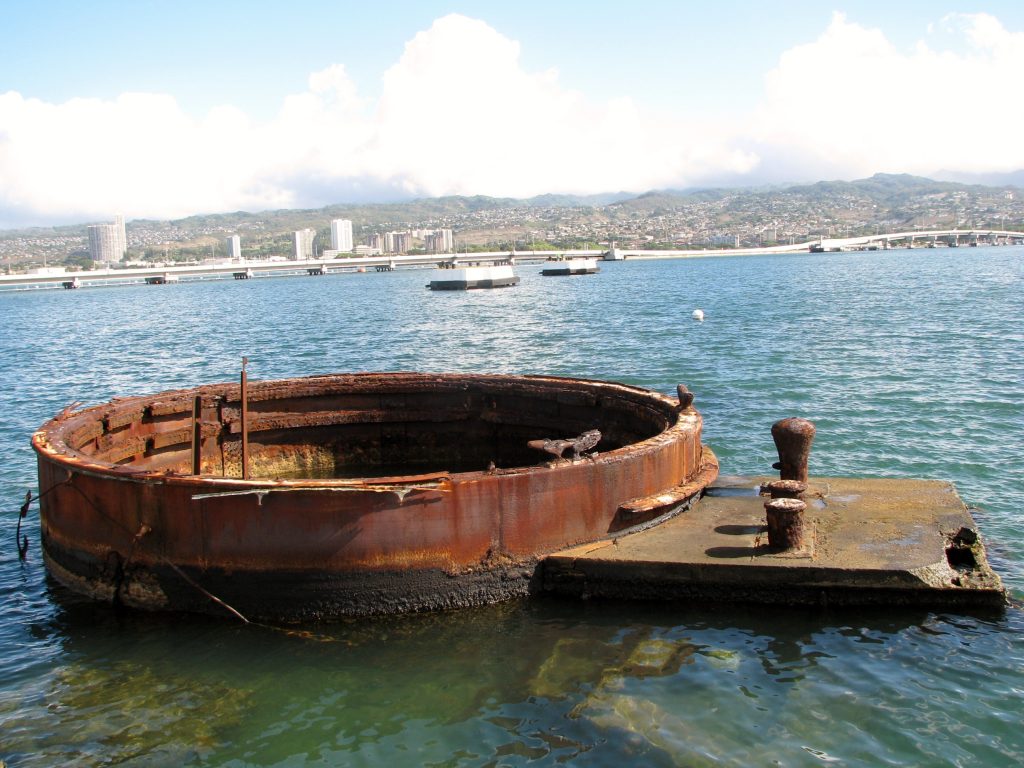
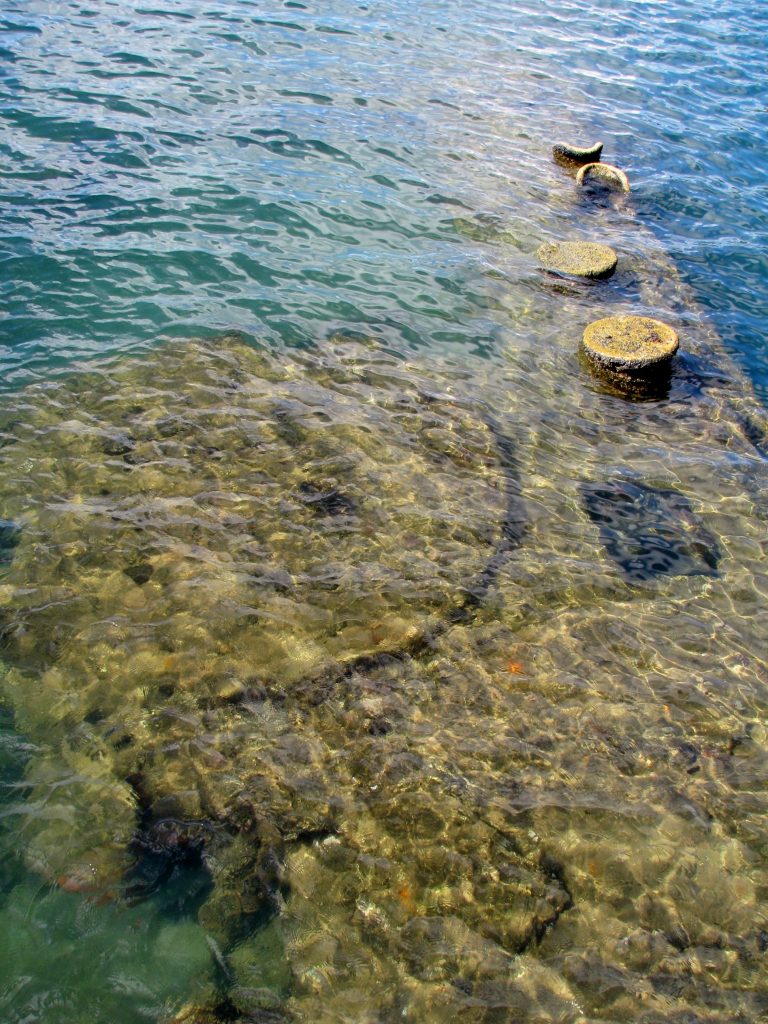
The Shrine Room entrance is at the end of the memorial. The room is where the names of those killed on the Arizona are engraved on the marble wall. To the left of the main wall is a small plaque which bears the names of thirty or so crew members who survived the 1941 sinking.
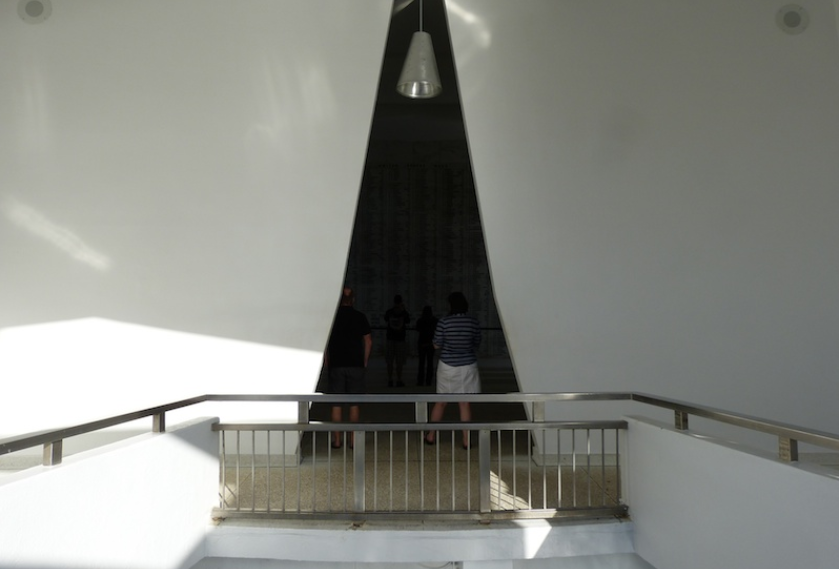
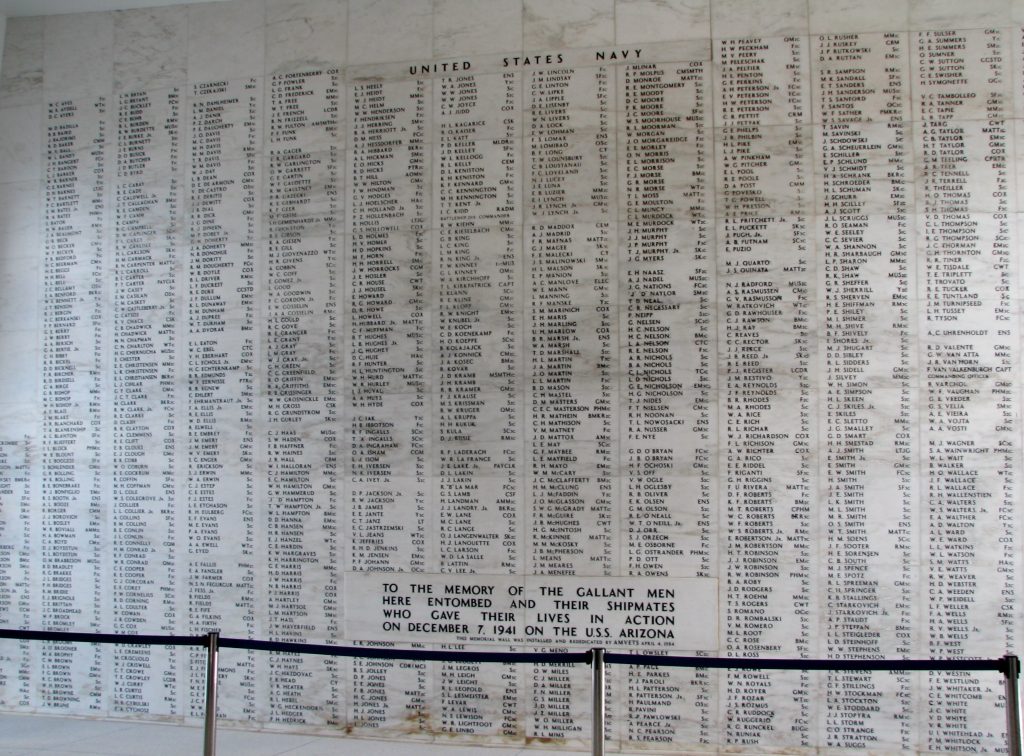
We took a bus to Ford Island, located in the middle of Pearl Harbor, where the U.S.S. Missouri is docked. Ford Island is an active military base. As we drove out to the island, we were told we could not take pictures during the drive after entering the Ford Island Bridge.
The Ford Island Bridge, is a pontoon bridge, commonly called a floating concrete drawbridge, providing access to Ford Island, a United States Navy installation situated in the middle of Pearl Harbor. The bridge provides access to the island’s historic sites to the public via tour bus. The bridge is one of only a few floating bridges and its floating moveable span is the largest worldwide.
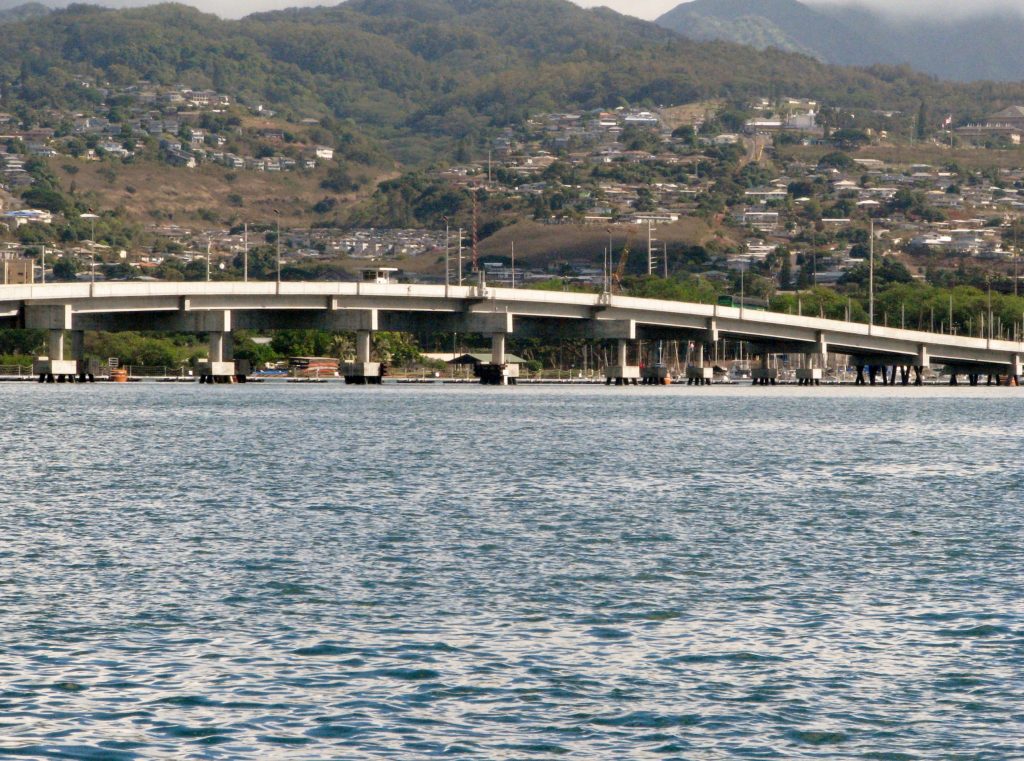
The Missile Defense Agency’s eye catching Sea Based X Band Radar was at Ford Island Hawaii for replenishment of food and fuel and to perform some checks. The $1 billion platform is 240 feet wide, 390 feet long and is more the 280 feet from its bottom to the top of the radar dome. It weighs in at 50,000 tons. The powerful radar has 45,000 radiating elements within its white pressurized dome to track targets. Designed to discriminate nuclear warheads from decoys, the radar is so powerful it can detect a baseball flying through the air on the East Coast when the SBX itself is on the West Coast.

The path leading to the USS Missouri Memorial is lined with American Flags giving an impressive entrance to the ship.
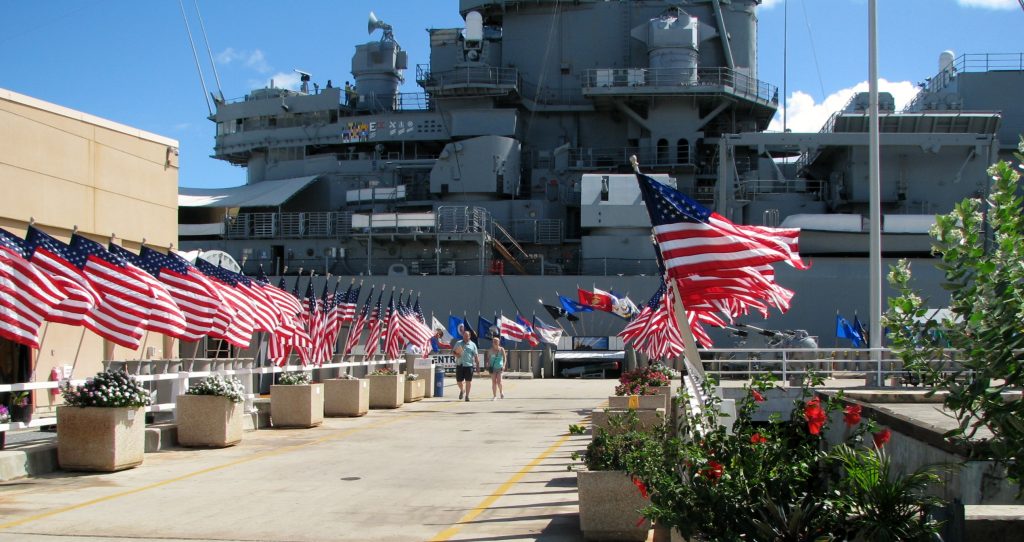

At the entrance is the Statue of WWII Kissing Couple, which adds fun to the area
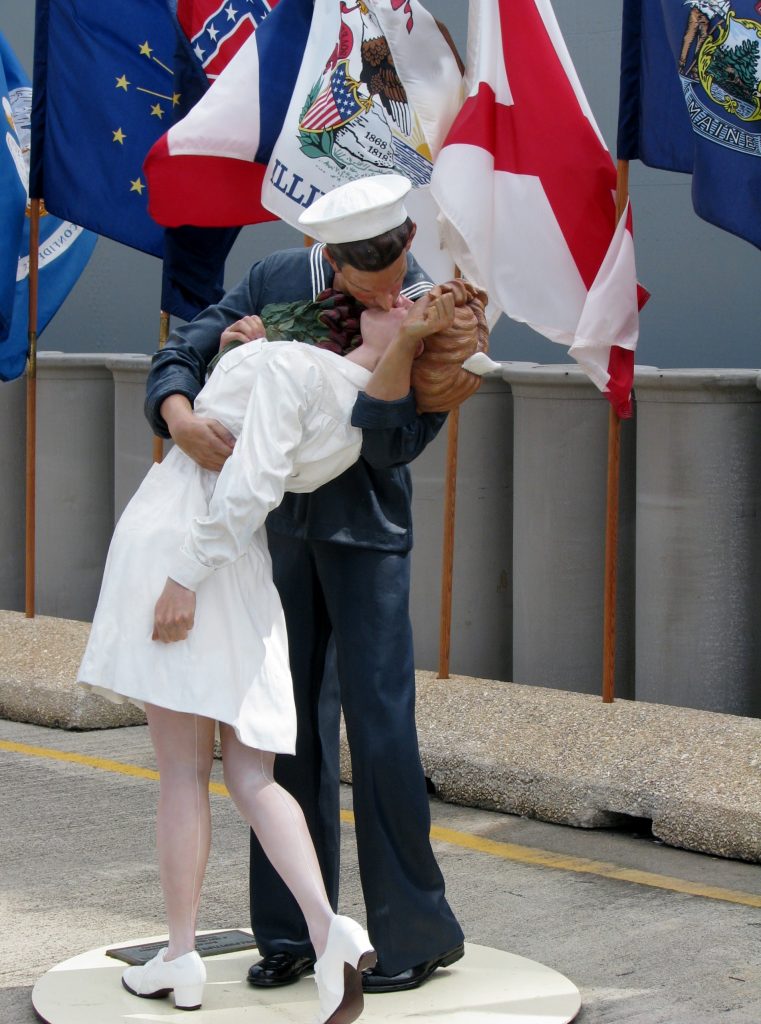
A nine foot bronze and granite statue honoring Fleet Adm. Chester Nimitz, who directed the War of the Pacific, next to the battleship.
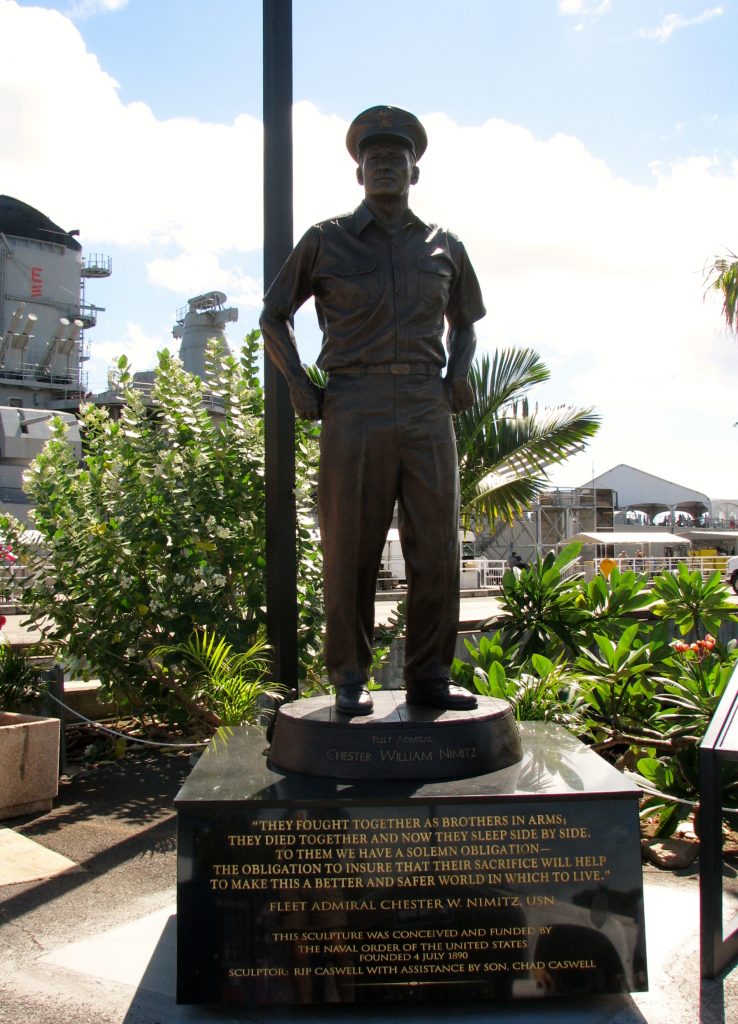
Before boarding the Missouri, our picture was taken with the ship in the background.
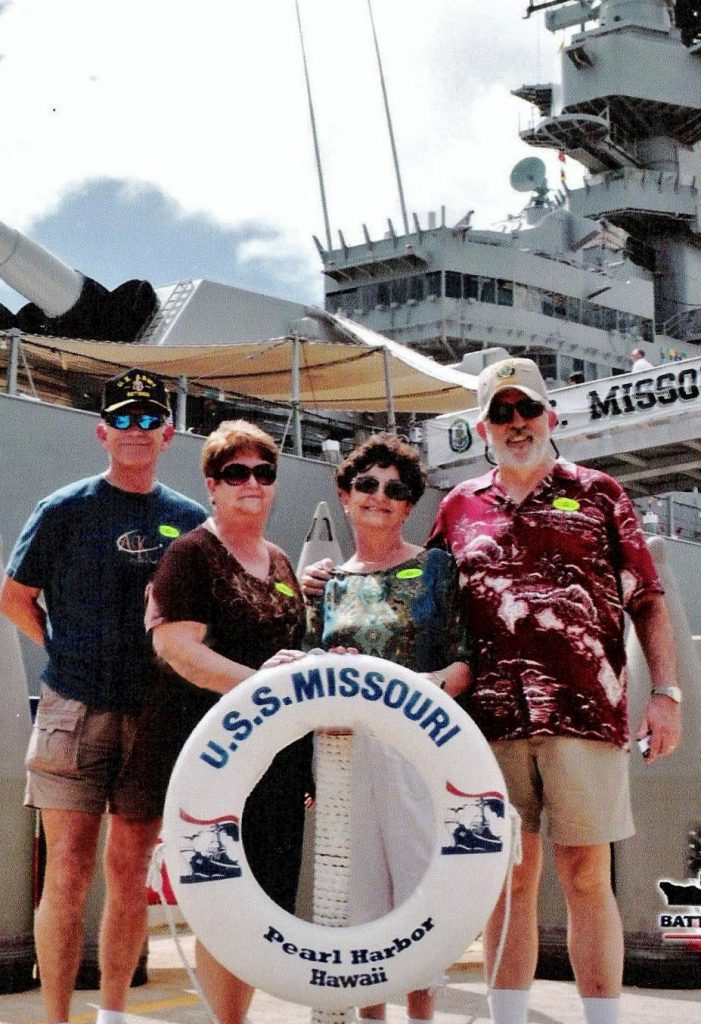
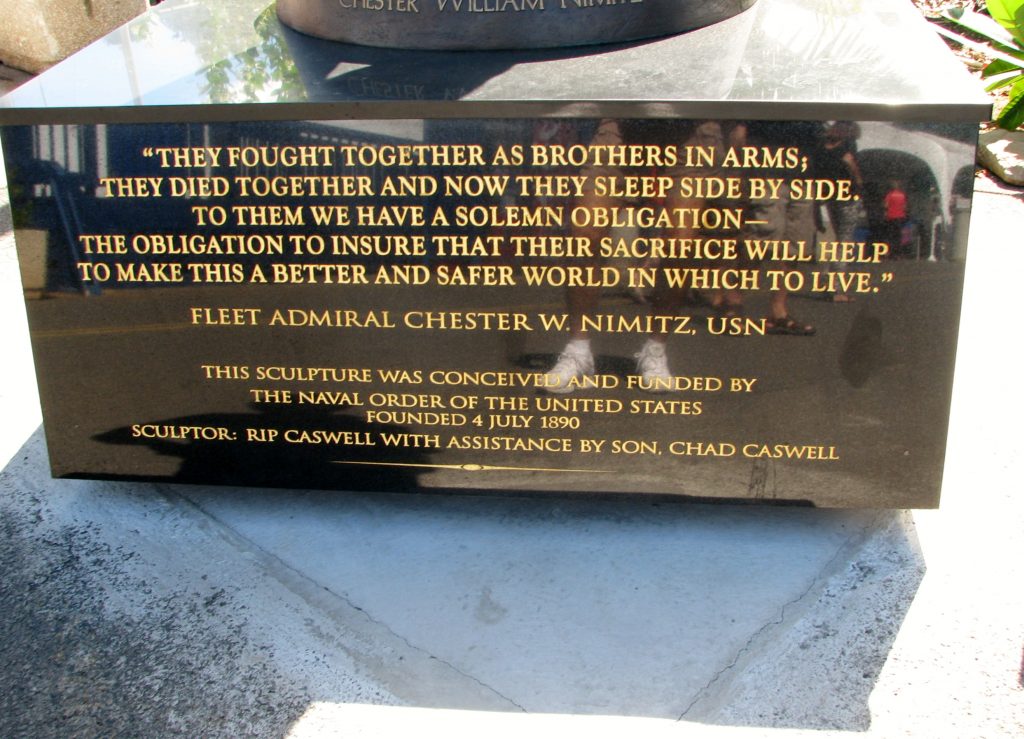
The Battleship Missouri Memorial is the home of the most celebrated battleship built by the U.S. Navy. The decision to have Missouri’s bow face the Arizona Memorial was intended to convey that Missouri watches over the remains of the Arizona, so that those interned within it’s hull may rest in peace.
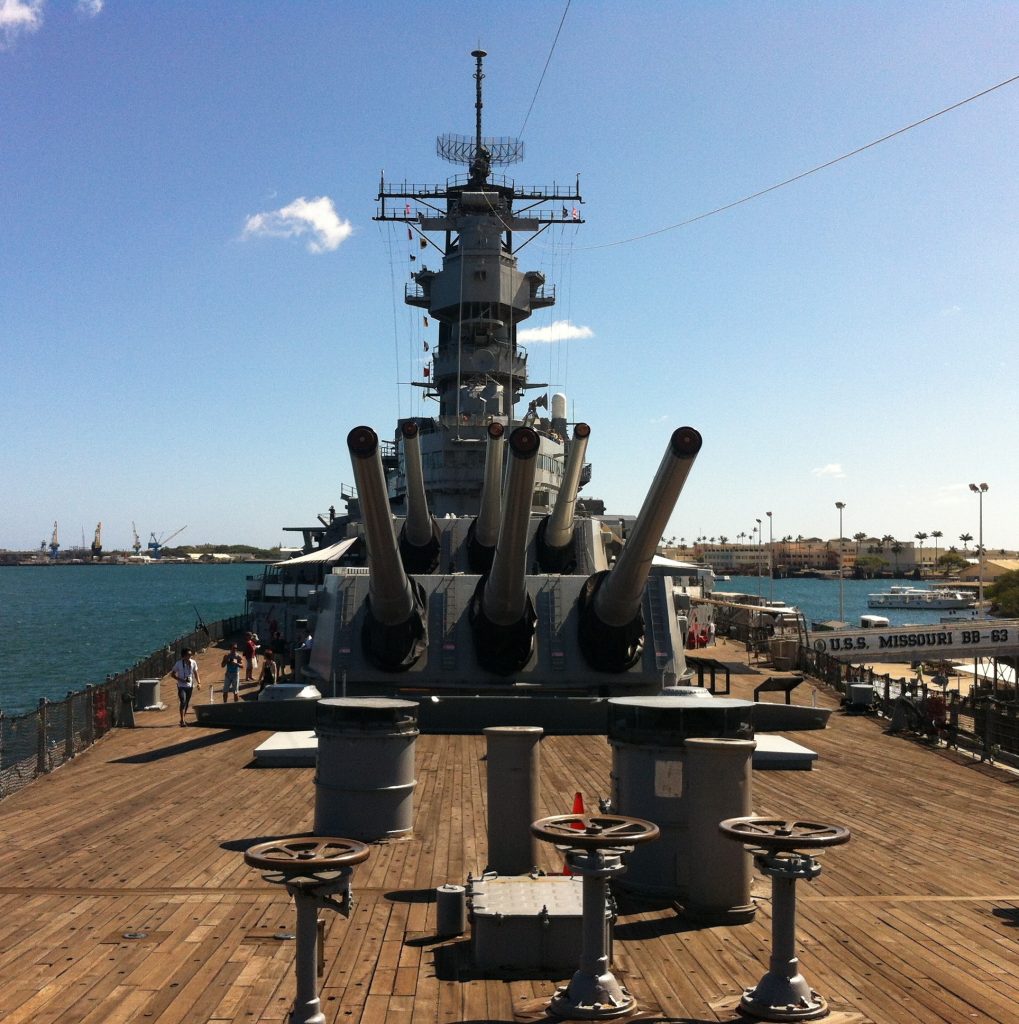
Our tour started directly beneath three of the nine 16 inch guns, which could fire 2,700 lb armor piercing shells 20 miles. We strolled the 53,000 square foot teak deck and relived history on the Surrender Deck, where World War II cam to a close. It was here that the Japanese Empire surrendered to the Allied Forces on September 2, 1945. A plaque now commemorates the spot where the surrender document was signed.
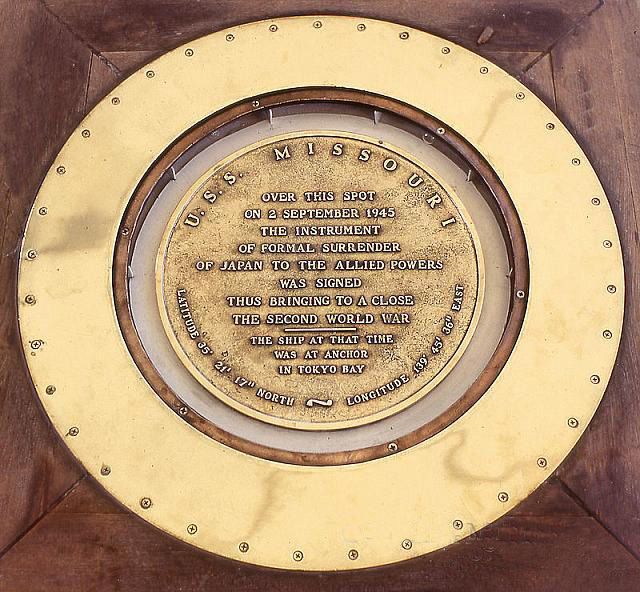
What was surprising about the ship was its size. When we traveled through the decks below, it felt like a small city, complete with offices, kitchens, computer rooms, bunk rooms and everything else. Of course the officer’s areas have more space.
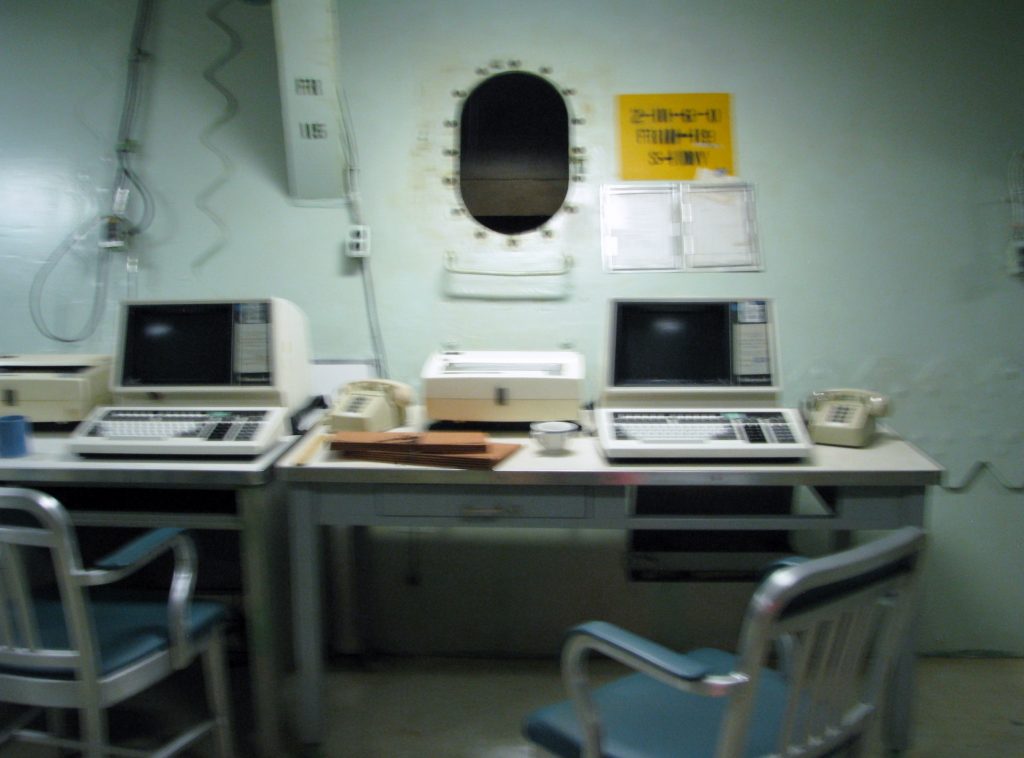
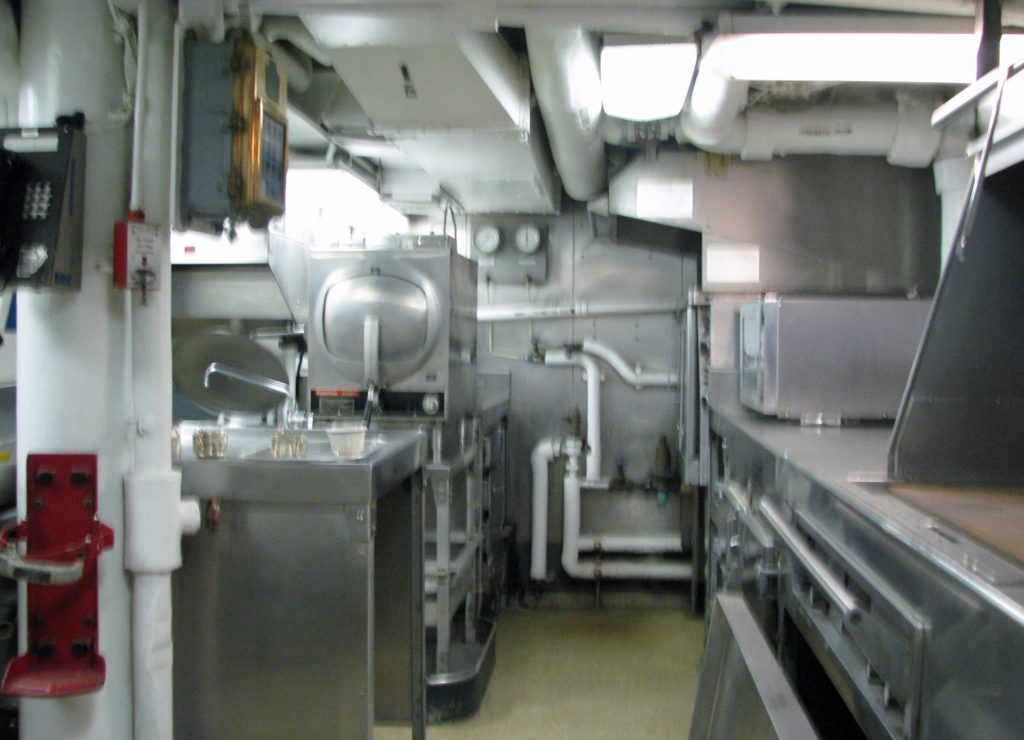
As we were leaving the ship the Navy personal were gathering on the deck for some type of ceremony, but we didn’t hear what type it was.
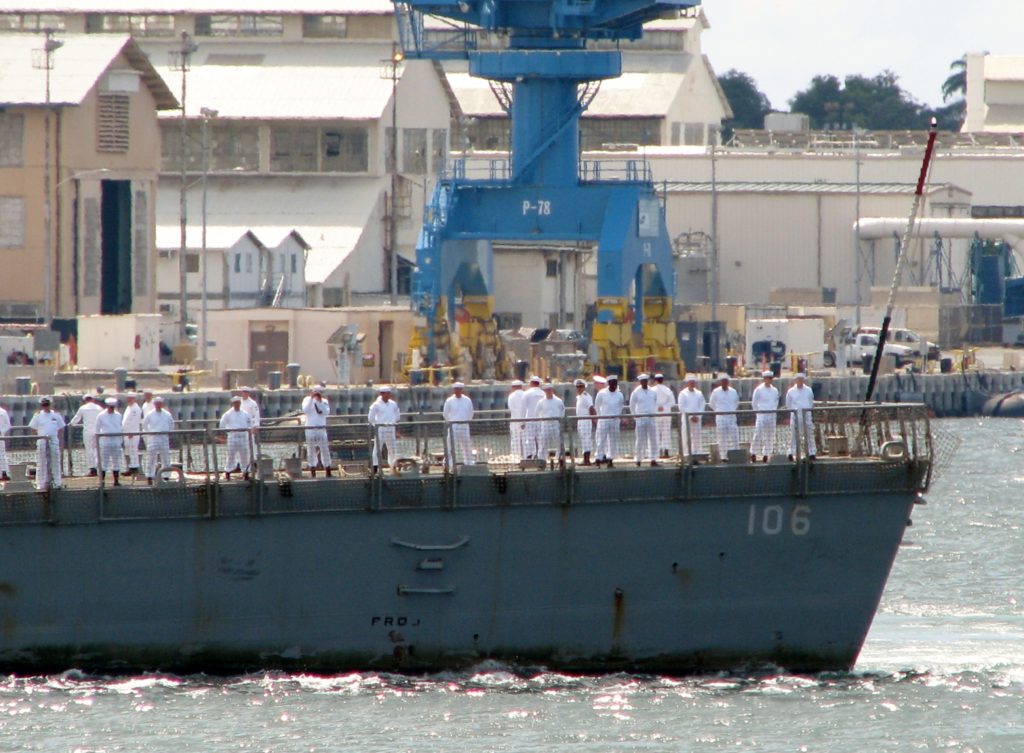
After leaving Ford Island we headed to The National Memorial Cemetery of the Pacific (informally known as Punchbowl Cemetery is a national cemetery located at Punchbowl Crater. Since the cemetery was dedicated on September 2, 1949, approximately 53,000 World War I, World War II, Korean War, and Vietnam War veterans and their dependents have been interred. The cemetery now almost exclusively accepts cremated remains for above-ground placement in columbaria.
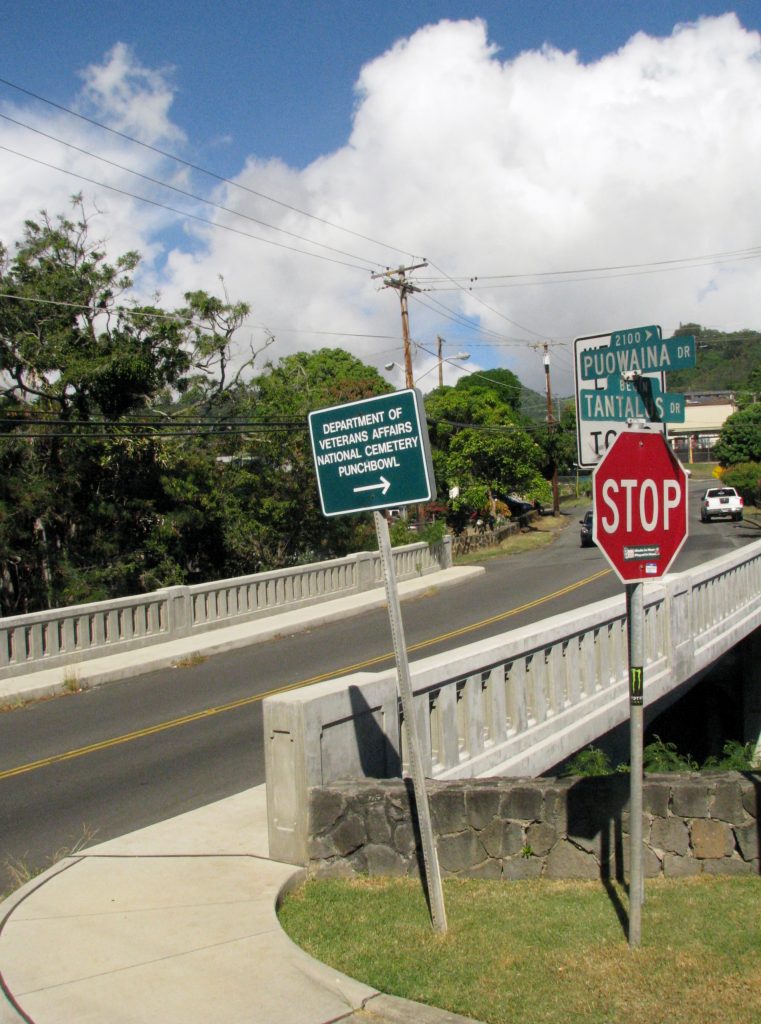
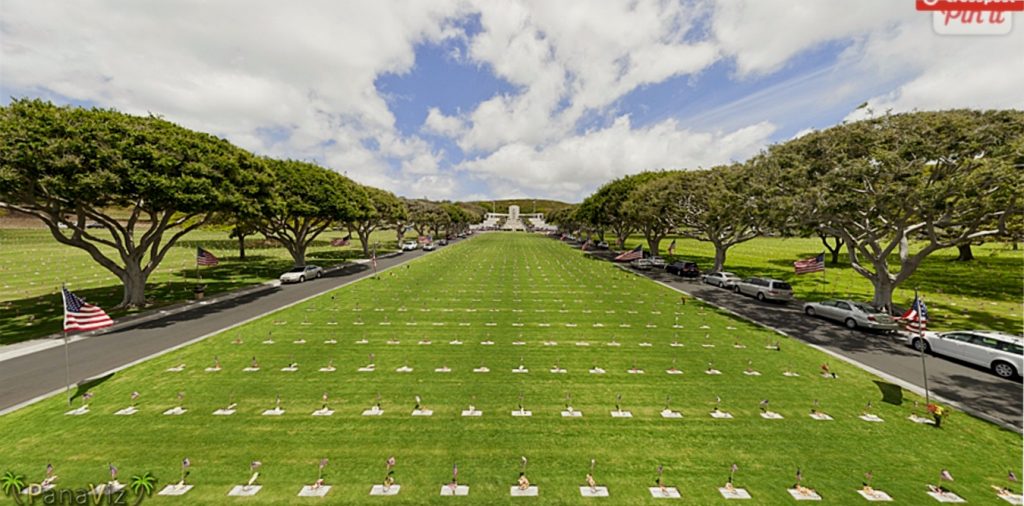
The dedication stone at the base of staircase is engraved with the following words: IN THESE GARDENS ARE RECORDED THE NAMES OF AMERICANS WHO GAVE THEIR LIVES IN THE SERVICE OF THEIR COUNTRY AND WHOSE EARTHLY RESTING PLACE IS KNOWN ONLY TO GOD
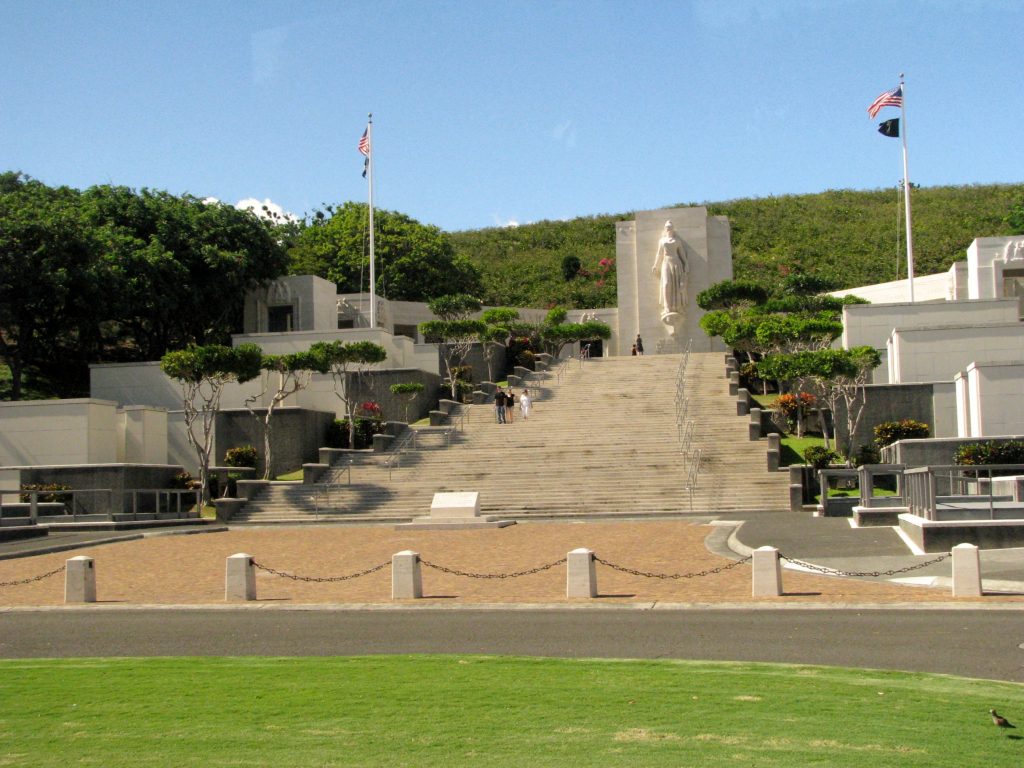
The center piece of the cemetery, atop a marble flight of stairs, is the Court of Honor, anchored by the 30 foot statue of a female figure holding a laurel branch. She has been called Lady Columbia, Lady Liberty of Justice. This statue is featured in the opening sequence of the both the 1970s television series Hawaii Five-O and its 2010 remake has also filmed at the cemetery several times—the father of lead character, Steve McGarrett, is supposed to be buried near the statue.

The memorial contains a small nondenominational chapel and and several engraved galleries of maps, which depicts important Pacific engagements of WWII.
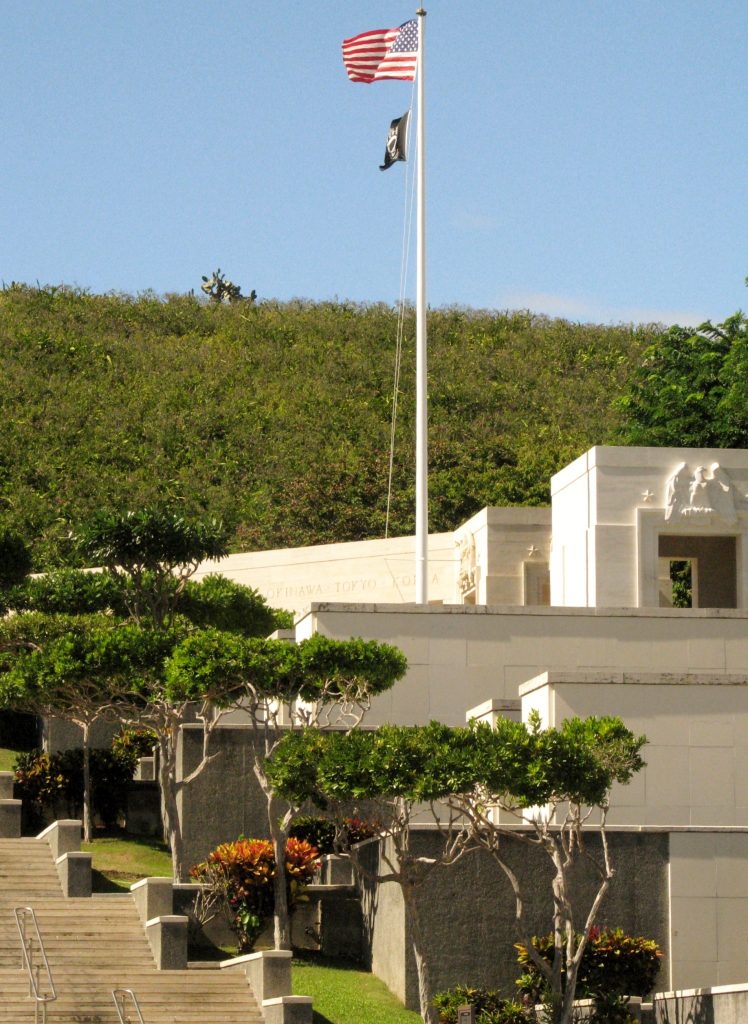
The names of 28,788 military personnel who are missing in action or were lost or buried at sea in the Pacific during conflicts are listed on marble slabs in ten Courts of the Missing which flank the Memorial’s grand stone staircase.
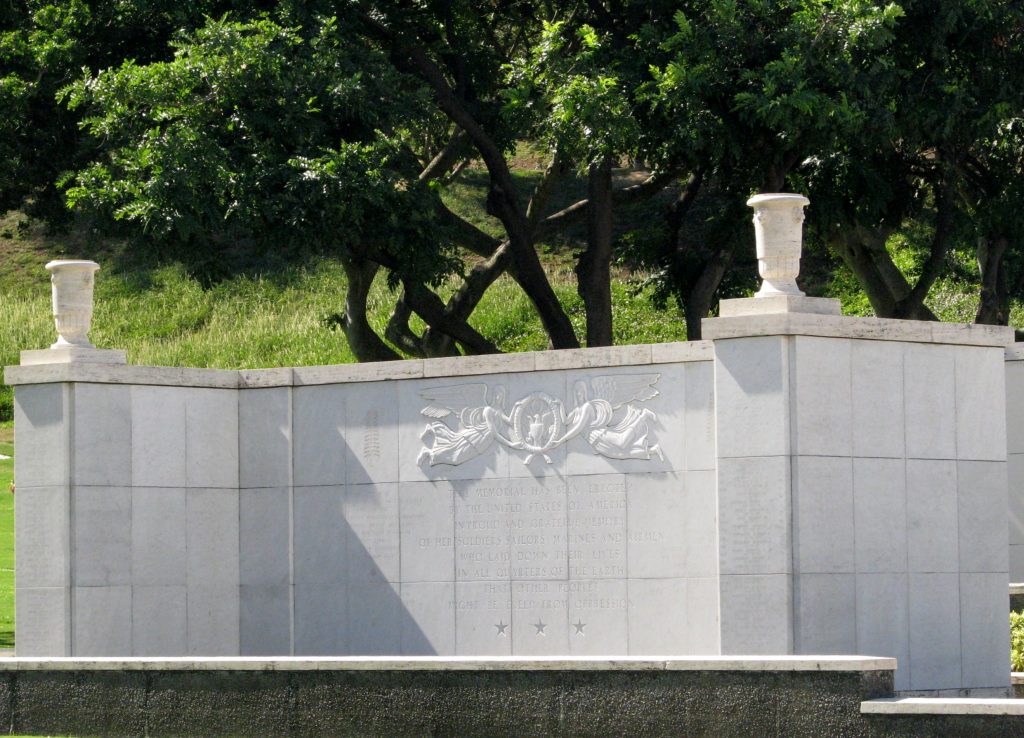
Initially, the graves were marked with white wooden crosses and Stars of David meant to be only temporary. In 1951 people protested and permanent flat granite markers replaced them.

It was Halloween and we saw this lady waiting for a bus while she put on her clown makeup.
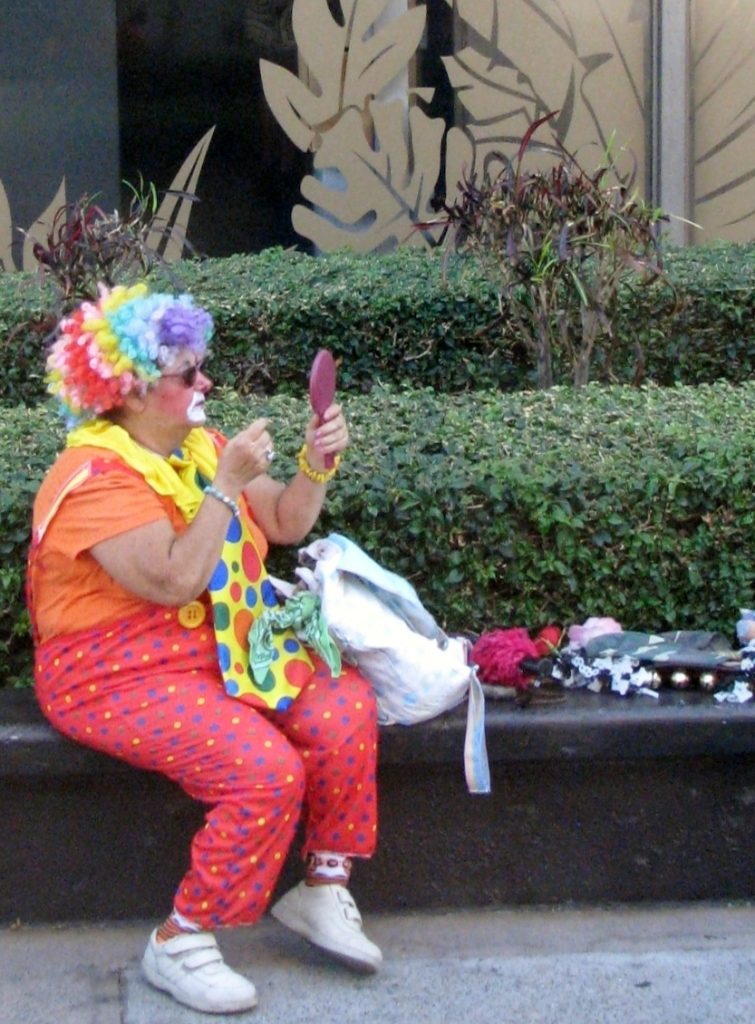
King Kamehameha is the father of Hawaii having united all the the islands into one kingdom. The most recognized Kamehameha statue stands in front of Alliolani Hale, home to the Hawaii State Supreme Court. It is one of Oahu’s most photographed landmarks. On Hawaii Five-O King Kamehameha Statue ad Alliollai Hale is featured as their work place.
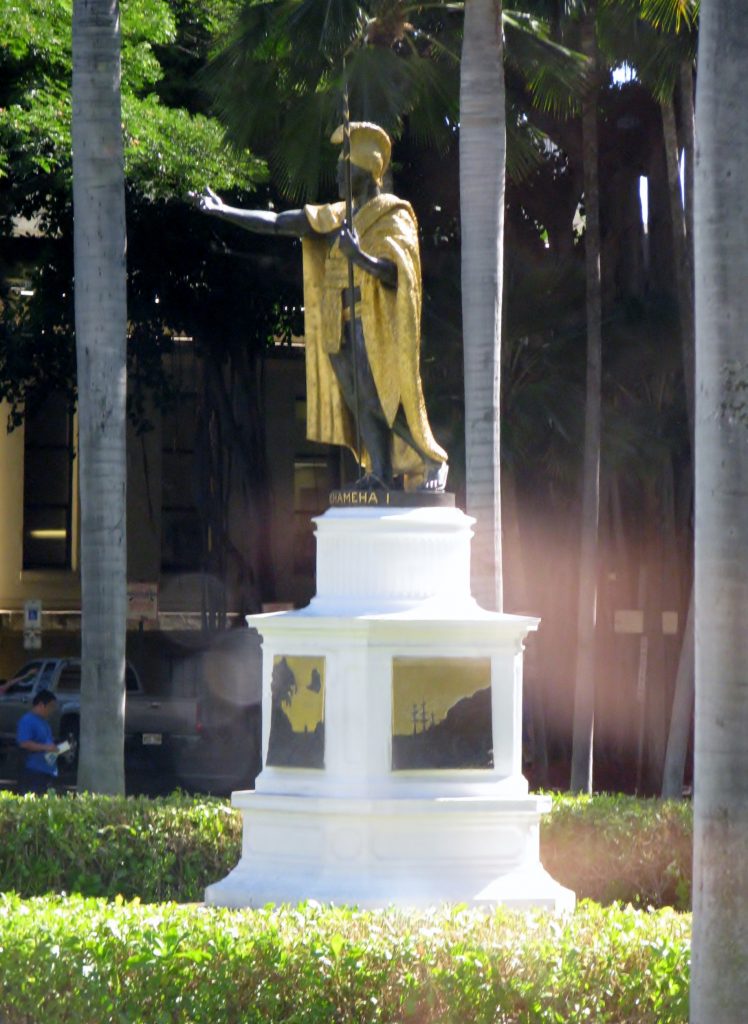
Kawalahao Church is know as Hawaii’s Westminster Abbey and is one of the oldest churches in Hawaii. It built in 1842 and was once known to be the chapel for royalty
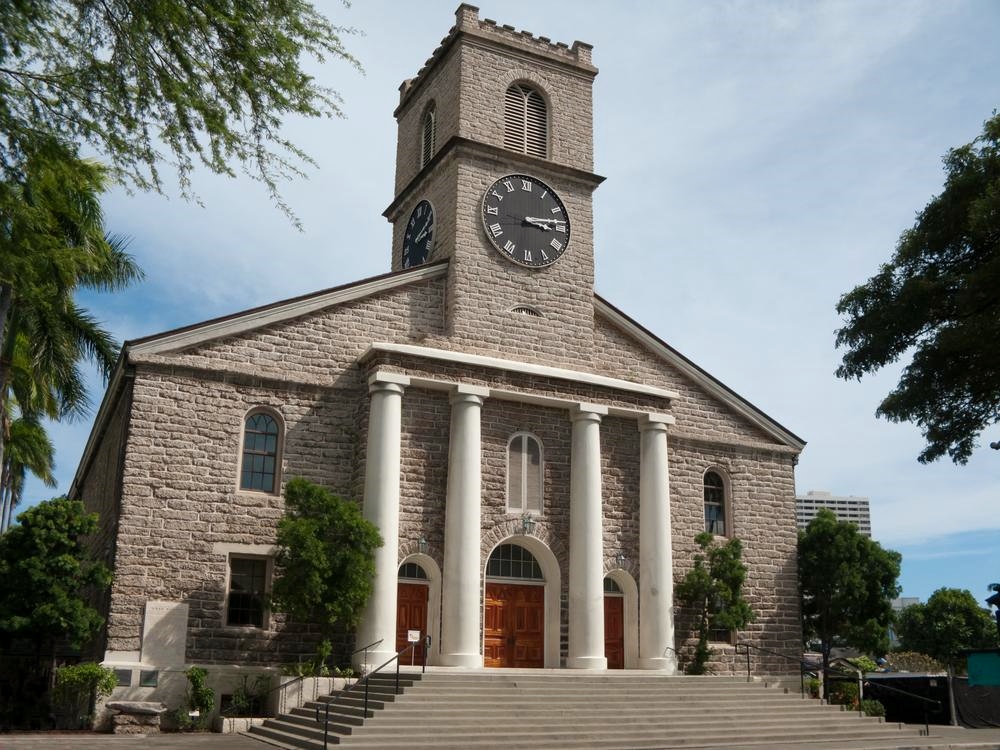
The State Capitol building is surrounded by a reflecting pool, symbolizing the Pacific Ocean. The columns around the perimeter of the building have shapes resembling royal palm trees. There are eight in either side of the building, representing the eight main islands of Hawaii.

Washington Place, for more than 160 years, has remained at the center of social and political life in the Hawaiian Islands and has served as official residence for the Governor of Hawaii.
